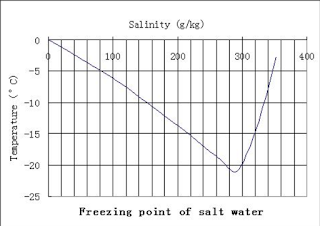
After seeing this picture, my friend texted me asking if we could try this, so we set up our own using hot coffee, a glass of ice water, and straws.
The principle it's based upon is thermal equilibrium, but I didn't think the ice water would be enough to actually cool the coffee a significant amount since it moved so quickly through the straw—It did actually work.
Theoretically, the calculations for the thermal equilibrium equation would be as follows:
Assuming there is approximately one straw full of coffee in the ice water, and the average drinking straw has a length of around 8 inches and a diameter of 0.21 inches, the volume of the coffee inside the straw will be 4.541x10(^-6) m³. Since coffee is very similar to water, we can use the conversion 1 m³ of water = 1000.0 kg of water, giving us a mass of .0045 kg of coffee in the straw. Since we got the coffee fresh, and most coffee is served at about 180°F, we convert that to 82.2°C.
The straw only takes up 4.541x10(^-6) m³ in the water, so it won't interact with the entirety of the cup of water. Using double the volume of water displaced by the straw, to represent the volume surrounding the straw that might have a chance of interacting with the coffee in the straw in such a short amount of time, gives us .009 kg in the cup at freezing.
So Qʷᵃᵗᵉʳ+Qᶜᵒᶠᶠᵉᵉ = 0J
Because we use water for both of them, specific heat (c) can be cancelled out.
(.0045kg)
.0045Tᶠ - .3699 + .009Tᶠ = 0J
.0135Tᶠ = .3699
Tᶠ = 27.4°C

